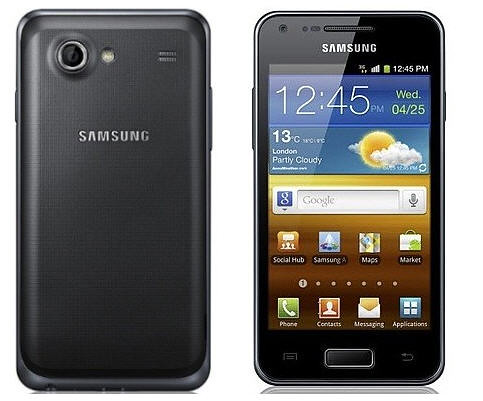Samsung Galaxy S Advance

Samsung's Galaxy S III may be attracting a huge amount of attention at present with its pop-up shops and massive pre-orders, but it's not the only new handset in Samsung's range that's worth a look.
The Galaxy S Advance may boast fewer cutting-edge specifications, but it's also a less expensive phone, and has plenty to recommend it. Clove Technology sent us a review sample of the Galaxy S Advance, which it's selling for £322.80 (inc. VAT). By contrast, the Galaxy S III goes for £499.99 (inc. VAT).
The Samsung Galaxy S Advance runs on a 1GHz dual-core processor and has a generous 4in., 800-by-480-pixel screen. The chassis design is thin and light, and some careful thought has gone into the software bundle.

There is an annoyance in that the Galaxy S Advance runs Android 2.3. Of course, plenty of lower-cost handsets don't run the new Android 4.0 (Ice Cream Sandwich) operating system, but you can get the budget-priced HTC One V for around £235 and it does run Android 4.0. That might be enough to sway some away from the Galaxy S Advance towards the slightly smaller HTC model.
Another irritation is the location of the headset jack on the bottom of the chassis: it feels wrong putting a handset into a pocket upside down, although it's not a deal breaker.
Build quality is nice and very typically in the Samsung mould, with curved corners and a single physical button beneath the screen that's flanked by touch-sensitive Menu and Back buttons when you need them. The handset is thin too, at just under 10mm.
Samsung's software tweaks include a rather nice facility to put up to four shortcuts for camera actions in a menu down the left edge of the screen when you're framing shots. This makes it easy to do things like toggle the flash, timer or geolocation, or use various shooting modes. The 5-megapixel camera performs pretty well, too.
Meanwhile there is DLNA for media sharing, Polaris Office for document editing and creation, Kies Air for file exchange over Wi-Fi via a desktop web browser, plus a fair range of widgets to augment the Android standards.
It's not a high-end smartphone, but the Galaxy S Advance definitely breathes new life into Samsung's mid-range offerings.
Sandra Vogel